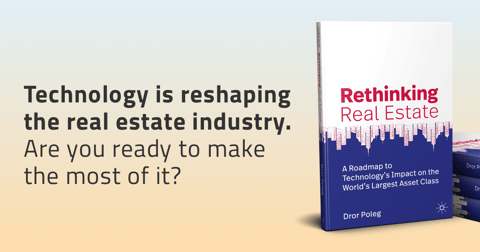Book Summary: Rethinking Real Estate: A Roadmap to Technology’s Impact on the World’s Largest Asset Class, by Dror Poleg
Read Time 3 mins | Sep 22, 2020 1:18:54 PM | Written by: Ed Carey

“The technological and demographic changes of our age correspond
with those of the late nineteenth century, fueling demand for housing solutions that are shared, flexible, serviced, and urban.” (p. 163)

Poleg’s interesting perspective as to how technology is changing real estate invokes previous industrial revolutions to predict the evolution of how people will want to work and live. Below is a summary of my 3 biggest takeaways in regards to the future of real estate marketing:
Insight #1: Value is shifting away from the physical real estate asset, towards those platforms or services that know how to effectively drive usage of the asset - typically using on-demand tech applications.
What this means for real estate marketing: Dror addresses how a listing or property's value has shifted from the building owner, to the person or entity that is responsible for getting customers in the door and servicing them (think: landlord vs. WeWork, Airbnb, OYO, or Zillow). Aligned with this observation, it got me wondering how exactly do these buying or renting customers come to learn these new applications and services exist in the first place? The book mentions a handful of new VC backed PropTech companies that are creating consumer apps that offer co-living, flex working, home rentals, and other ways of using physical spaces in new ways. But I imagine these new companies with new consumer and business models are going to require a lot more than word-of-mouth if they ever want to scale.
Insight #2: Nearly 30% of the workforce will have the ability to work under flex working conditions by 2030 (up from 2% in 2018) and therefore people will no longer need to cluster in the same geographic location to work. This has huge implications for entire regional economies that depend on people physically working in offices and living nearby.
What this means for real estate marketing: When a large percentage of the workforce is no longer constrained to the physical location of their employer and can live essentially anywhere, imagine how this would impact the way you could market residential property differently. For example, you might advertise listings to people in suburban New York City to move to upstate New York or Pittsburgh where it’s a lot easier to live.
Insight #3: Apartments, hotels, and vacation rentals are all the same business with different ways of transacting; and consumers are moving towards wanting the flexibility and services they offer instead of more binding leases or home ownership.
What this means for real estate marketing: It was fascinating to understand the history of this topic. The hotel industry is simply just a “branded” short-term apartment, and, in fact, it was for that intent that they first emerged, and it is for that purpose they are slowly returning to today. Concurrently, new tech-enabled companies are spinning up almost every possible consumer experience that goes way beyond what hotels, Airbnb, or multi-family companies offer today, addressing issues like: Do I live there? For how long? A week, a night, a month, a year? Is it done via “one-click” or will it require more information or financing? Can I earn equity, even if I rent? Marketing and paid advertising will need to play a significant role in educating consumers of all ages as to how their business can be a viable solution for consumers’ specific needs. And yes, they will all need to invest a substantial amount of time and money educating mass markets of these offerings.
CONTACT US to learn more about Audience Town and how we can help you reach your desired real estate audience!